“The Bathers” by Pierre-Auguste Renoir – An Ode to Natural Beauty
The Bathers by Pierre-Auguste Renoir, completed between 1918 and 1919, is a testament to the artist’s enduring fascination with the human form and his masterful use of color and light. This painting, one of Renoir’s final works, captures a serene and idyllic scene of nude female figures in a lush, natural setting. Reflecting his Impressionist roots, Renoir employs soft, fluid brushstrokes and a vibrant palette to convey the warmth and sensuality of the moment. The composition exudes a sense of timeless beauty and tranquility, encapsulating Renoir’s lifelong pursuit of capturing the joyous and fleeting nature of life. The Bathers stands as a significant piece in Renoir’s oeuvre, showcasing his ability to blend classical forms with modern techniques, ultimately creating a harmonious and enchanting vision of nature and humanity.
Key Takeaways
- The Bathers was created by Pierre-Auguste Renoir between 1918 and 1919.
- The painting embodies Renoir’s late style with its vibrant and dynamic composition.
- Renoir’s work received mixed reviews, highlighting its unique place in art history.
Historical Context and Significance
| Artist | Pierre-Auguste Renoir (1841 – 1919) |
|---|---|
| Date Created | 1918 – 1919 |
| Medium | Oil on canvas |
| Genre | Genre painting |
| Period/Movement | Impressionism |
| Dimensions (cm) | 60 x 110 |
| Series/Versions | N/A |
| Where Is It Housed? | Musée d’Orsay, Paris, France |
| What It Is Worth | Estimated at over $50 million |
Pierre-Auguste Renoir’s The Bathers, completed between 1918 and 1919, stands as a significant work from his late career. This painting, currently housed at the Musée d’Orsay in Paris, captures a harmonious and idyllic scene that exemplifies Renoir’s mastery in depicting the human form and his fondness for pastoral themes. Renoir’s approach in this piece showcases his departure from the contemporary trends of his time, offering instead a timeless celebration of nature.
The Bathers reflects Renoir’s continuous experimentation and dedication to his craft, evident in his handling of light and color.
The painting’s notable elements include the ample forms and vibrant hues, which create a dynamic yet serene composition. This work is also distinguished by its reception; it garnered mixed reviews upon its exhibition, illustrating the divided opinions in the art community regarding Renoir’s unique style.
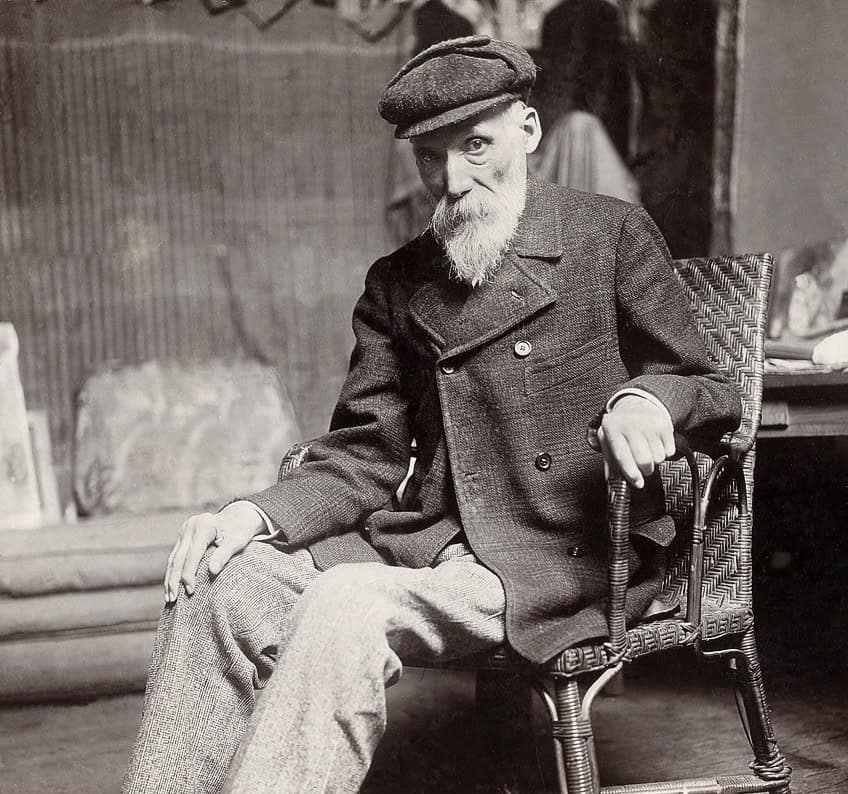
Renoir’s influence on the art world, especially within Impressionism, is undeniable. The Bathers represents not only his artistic evolution but also his enduring impact on future generations. This painting remains a testament to his ingenuity and the complexities of his later works, revealing his relentless pursuit of beauty and excellence.
Renoir’s Evolution as an Artist
Pierre-Auguste Renoir’s artistic journey saw substantial transformations. By the late 1910s, his style had matured significantly. He was battling severe arthritis, which affected his ability to paint. Despite this, he created some of his most memorable works.
During this period, Renoir shifted from the lighter brushstrokes of his early work to a more structured form. The Bathers showcases this change with its firm contours and warm palette.
His dedication is evident as he worked through physical pain to complete this masterpiece. His late works, including The Bathers, emphasize a timeless, idyllic view of nature. These compositions reflect a departure from contemporary subjects to more classical themes, highlighting his evolution as an artist.
Impressionism and The Bathers
The Bathers stands as a testament to Renoir’s contribution to Impressionism. Unlike his earlier Impressionist works, this painting incorporates more defined forms, moving away from the soft, diffused light typical of his past. Painted towards the end of the Impressionist period, The Bathers encapsulates the movement’s essence while hinting at Renoir’s distinct style.

The painting’s elements such as nude figures in an outdoor setting are classic Renoir motifs, bridging nature and human form. This artwork was donated to the French state by Renoir’s sons in 1923 and is now displayed at the Musée d’Orsay in Paris. Its continued appreciation underscores its importance within the Impressionist canon and its lasting impact on the art world.
Artistic Composition of The Bathers
Pierre-Auguste Renoir’s use of light, color, and figurative techniques in The Bathers exemplifies his mastery and experimentation during his late work period. His attention to the contrasting styles and meticulous detail in his subjects adds depth and complexity to the painting.
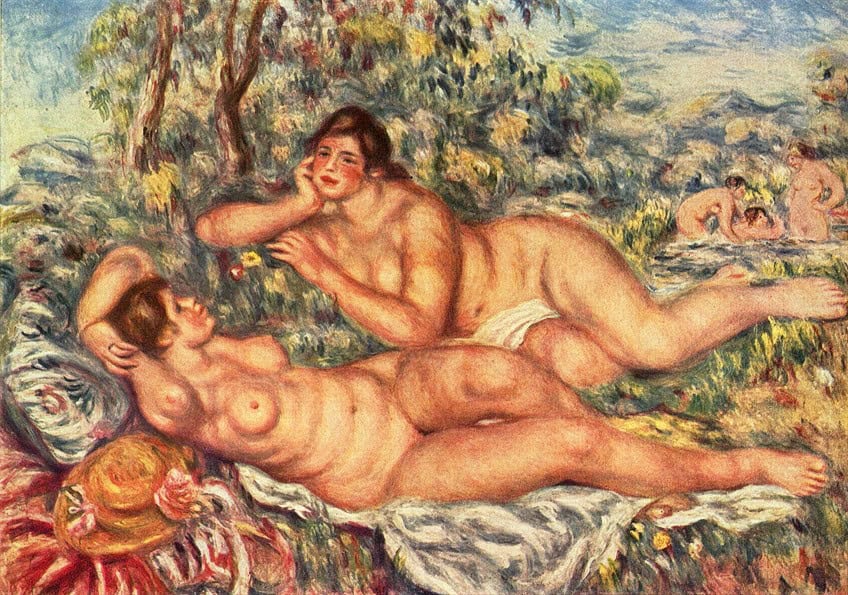
Use of Light and Color
Renoir’s application of light in The Bathers enhances the softness of the figures and their surroundings. The light seems to emanate from within the painting, gently illuminating the women. The palette is vibrant, dominated by warm hues that evoke a sense of warmth and serenity.
His choice of oil on canvas allows for rich textures and layering, contributing to the lush appearance of the landscape.
Subtle variations in color help to differentiate between the figures and create a sense of depth. The contrast between the sunlight and the shadow adds an almost ethereal quality to the scene, emphasizing the natural beauty of the women and their environment.
Figurative Techniques
The figurative techniques employed in The Bathers reveal Renoir’s deep understanding of the human form. The women are depicted with a sense of movement and grace, their arms and legs rendered with precise yet fluid brushstrokes. Renoir’s attention to detail is evident in the realistic portrayal of the canvas. His ability to capture the texture of skin and the interplay of muscles beneath the surface brings a lifelike quality to each subject.
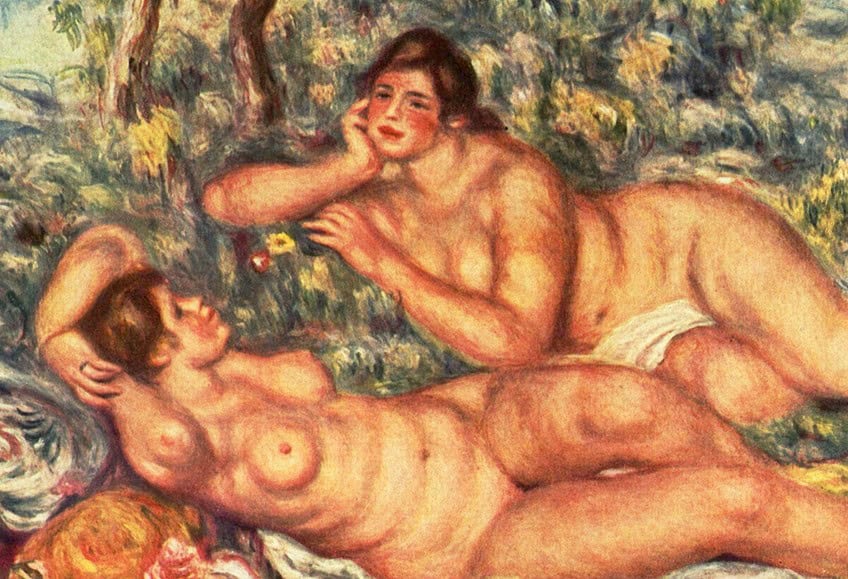
The composition juxtaposes Classical and Impressionist elements, with the left side reflecting more traditional techniques and the right showcasing Renoir’s experimentation. This creates a dynamic tension within the painting, highlighting the contrast between the bathers’ leisurely poses and the meticulous artistry behind them.
Critical Reception and Analysis
The Bathers by Pierre-Auguste Renoir faced varied responses from critics, evolving from initial skepticism to broader appreciation. Examining initial criticism and modern perspectives reveals significant shifts in its reception.
Initial Criticism of the Work
Pierre-Auguste Renoir encountered considerable criticism when The Bathers was first revealed. Contemporary critics found fault with various aspects of the painting, including the exaggerated proportions of the figures’ bodies. Renoir himself remarked that he was “roundly trounced” by critics who accused him of having lost his way artistically.
This initial wave of negativity was not isolated. Prominent voices in the art community questioned Renoir’s departure from his earlier style. Some accused him of laziness, interpreting the oversized limbs and unconventional form as signs of declining skill.
Much of the disapproval stemmed from Renoir’s transition away from Impressionism towards a more classical style. This shift confused and disappointed many who had admired his previous work. As a result, The Bathers was initially perceived as a controversial and arguably regressive piece in Renoir’s extensive portfolio.
Modern Perspectives
In contrast to early reactions, modern critics and art historians view The Bathers with greater appreciation. This perspective shift highlights the painting as a significant example of Renoir’s experimental approach and bold stylistic evolution. Today, it is often seen as an embodiment of Renoir’s mastery in blending classical themes with innovative techniques.
One key aspect now celebrated is the painting’s vivid portrayal of nudes in nature.
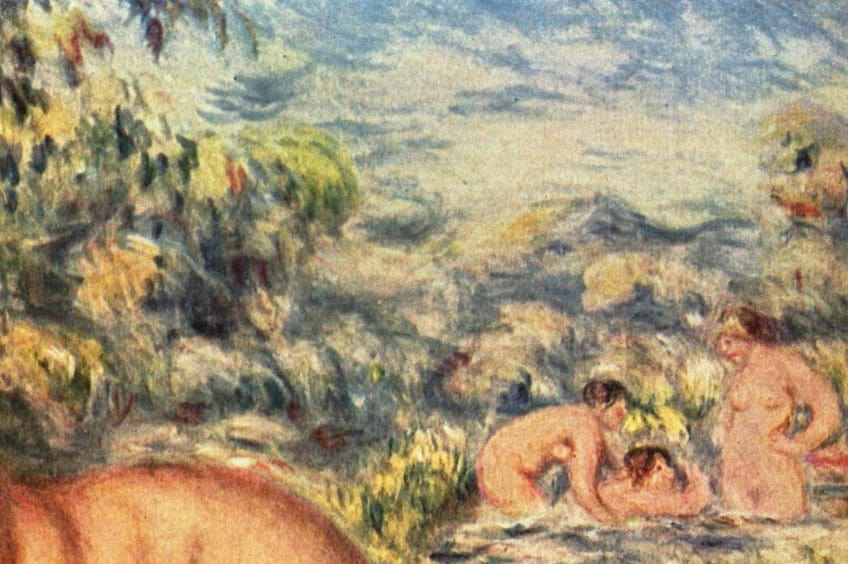
Modern critics admire the lush landscape and the fluidity of Renoir’s brushwork. The blend of realism and an almost dream-like quality captures the timeless beauty Renoir aimed to achieve. Additionally, The Bathers is recognized for its historical and artistic significance. It reflects the mature phase of Renoir’s career, showing his continued growth as an artist. Modern analysis appreciates the painting for its depth, context, and its influential role in shaping future artistic movements.
The Legacy of The Bathers
The Bathers by Pierre-Auguste Renoir is not just a masterpiece of Impressionism but also a significant work that has impacted modern art and continues to be relevant today.
Influence on Modern Art
The Bathers showcases Renoir’s commitment to exploring form and color. His use of soft, flowing lines and harmonious compositions influenced many modern artists, including Pablo Picasso and Henry Matisse. Renoir’s technique of blending figures with their surroundings contributed to the development of modern art styles like Fauvism. The painting’s celebration of nature without contemporary references also had a lasting impact on how future artists approached landscape and figure painting.
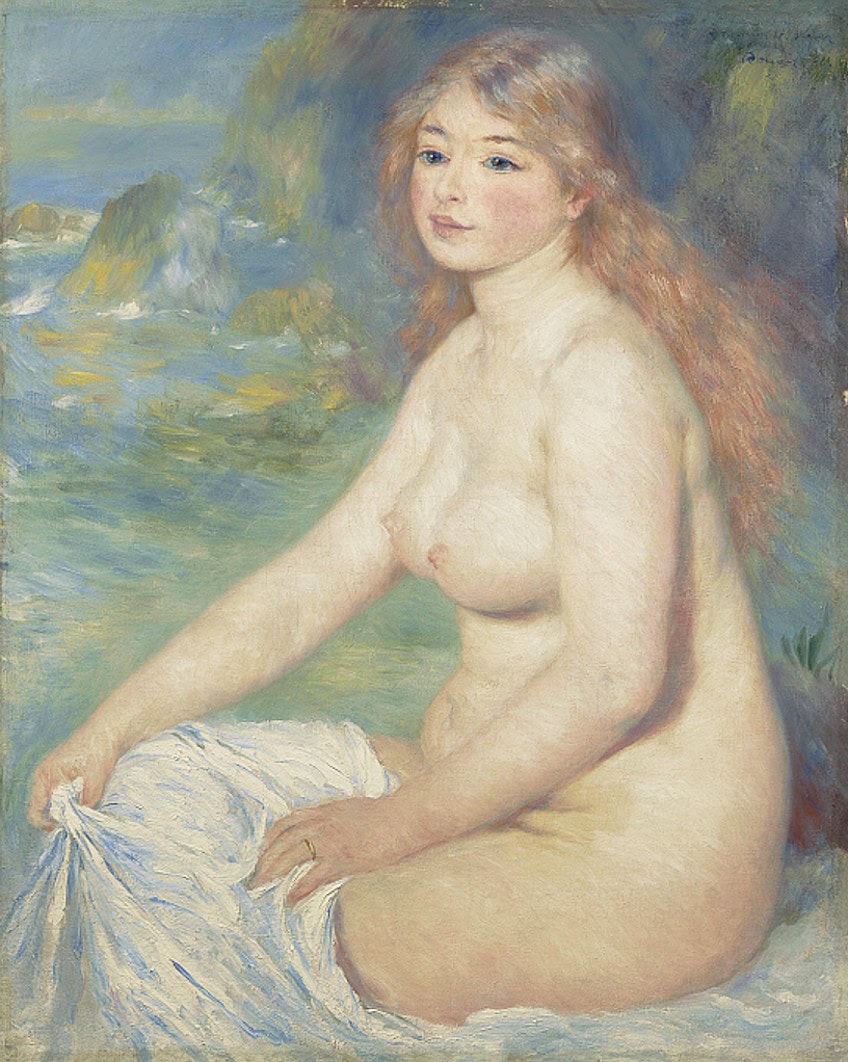
Renoir’s Enduring Relevance
Renoir painted The Bathers during his final years in Cagnes-sur-Mer. Despite his declining health, he insisted on painting daily, exemplifying his dedication to art. His son, Jean Renoir, a notable filmmaker, highlighted the painting’s timeless appeal. The Musée d’Orsay houses The Bathers, where it attracts audiences who appreciate its beauty and craftsmanship. The artwork’s enduring relevance speaks to Renoir’s mastery and its place in the history of art.
The Bathers by Pierre-Auguste Renoir epitomizes the artist’s mature style, where his Impressionist techniques merge seamlessly with a classical sensibility. As one of his last masterpieces, the painting encapsulates Renoir’s lifelong dedication to exploring the interplay of light, color, and the human form. The serene, almost dreamlike quality of the scene reflects his deep appreciation for natural beauty and the joy of life. The Bathers not only serves as a culmination of Renoir’s artistic journey but also as an enduring celebration of his belief in the timeless and universal appeal of the human experience. This work remains a poignant reminder of Renoir’s significant contribution to the art world and his ability to convey profound emotions through his masterful brushwork.
Frequently Asked Questions
What Inspired Renoir to Paint The Bathers?
Renoir’s inspiration for The Bathers came from his fascination with the human form and his love for depicting nudes in natural settings. This subject matter allowed him to explore the beauty of the human body and its harmony with nature, a theme he revisited throughout his career.
How Is The Bathers Significant in Renoir’s Body of Work?
The Bathers holds a significant place in Renoir’s oeuvre as it represents one of his final major works, completed between 1918 and 1919. Created towards the end of his life, it showcases his mature style and reflects the culmination of his artistic experimentation over the years.
What Are the Distinctive Artistic Elements of The Bathers by Renoir?
The painting is characterized by its soft, flowing brushstrokes and vibrant, yet harmonious color palette. Notably, the figures in the painting exhibit unusually large arms, which was a point of criticism during its time. Renoir’s technique in blending his figures seamlessly into the natural landscape is also a key feature.
How Does The Bathers Reflect Renoir’s Impressionist Style?
The Bathers exemplifies Renoir’s impressionist style through its treatment of light, color, and form. The loose brushstrokes and emphasis on capturing a moment in nature are indicative of impressionism. While Renoir’s later work shows a more refined approach, the essence of capturing the natural scene remains central in this piece.
Isabella studied at the University of Cape Town in South Africa and graduated with a Bachelor of Arts majoring in English Literature & Language and Psychology. Throughout her undergraduate years, she took Art History as an additional subject and absolutely loved it. Building on from her art history knowledge that began in high school, art has always been a particular area of fascination for her. From learning about artworks previously unknown to her, or sharpening her existing understanding of specific works, the ability to continue learning within this interesting sphere excites her greatly.
Her focal points of interest in art history encompass profiling specific artists and art movements, as it is these areas where she is able to really dig deep into the rich narrative of the art world. Additionally, she particularly enjoys exploring the different artistic styles of the 20th century, as well as the important impact that female artists have had on the development of art history.
Learn more about Isabella Meyer and the Art in Context Team.
Cite this Article
Isabella, Meyer, ““The Bathers” by Pierre-Auguste Renoir – An Ode to Natural Beauty.” Art in Context. August 5, 2024. URL: https://artincontext.org/the-bathers-by-pierre-auguste-renoir/
Meyer, I. (2024, 5 August). “The Bathers” by Pierre-Auguste Renoir – An Ode to Natural Beauty. Art in Context. https://artincontext.org/the-bathers-by-pierre-auguste-renoir/
Meyer, Isabella. ““The Bathers” by Pierre-Auguste Renoir – An Ode to Natural Beauty.” Art in Context, August 5, 2024. https://artincontext.org/the-bathers-by-pierre-auguste-renoir/.











